In this post, you will learn how and why to grow the pretty red flowering Scarlet Sage (Salvia coccinea) in your garden.
Why Scarlet Sage?
Scarlet Sage was one of the very first native plants I purchased for my garden. I found Scarlet Sage at a local native plant sale, and, since then, I’ve come to realize I was lucky to begin my native plant journey with this easy to grow pollinator favorite. My garden consists primarily of sandy, dry, poor nutrient soil, but Scarlet Sage proved itself a winner, managing to grow and bloom in both full sun and part shade areas of my yard.
Scarlet Sage readily reseeds, so I’ve turned my one plant into patches of red flowers scattered throughout my garden. The tubular flowers are adored by Ruby-throated Hummingbirds (Archilocus colubris)and butterflies, especially by my favorite butterfly the Zebra Longwing (Heliconius charithonia). Since it blooms for more than half the year, pollinators can rely on finding Scarlet Sage flowers in my garden through early winter.
What is Scarlet Sage?
Scarlet Sage (Salvia coccinea), also called Tropical Sage or Red Sage, is a member of the mint family (Lamiaceae). Plants in this family are known to be aromatic. Lamiaceae includes herbs like basil, mint and rosemary that are widely used in cooking, as well as, catnip, salvia and bee balm that are considered medicinal. The genus name Salvia is derived from the Latin salveo which means “be well” referring to the medicinal properties of many of these plants. That said, Scarlet Sage is not edible. There are over 900 species of salvia around the world, however, Scarlet Sage is the only native salvia with red flowers found in North America outside Texas.
Distributed in the Southeastern US through Central America to northern South America, Scarlet Sage is one of 3 salvias native to the South you may regularly find for sale at nurseries specializing in native plants. While the other two salvias, Lyreleaf Sage (Salvia lyrata) and Blue Sage (Salvia azurea), are pretty native wildflowers, neither is as easy to grow or as showy and long-blooming as Scarlet Sage.
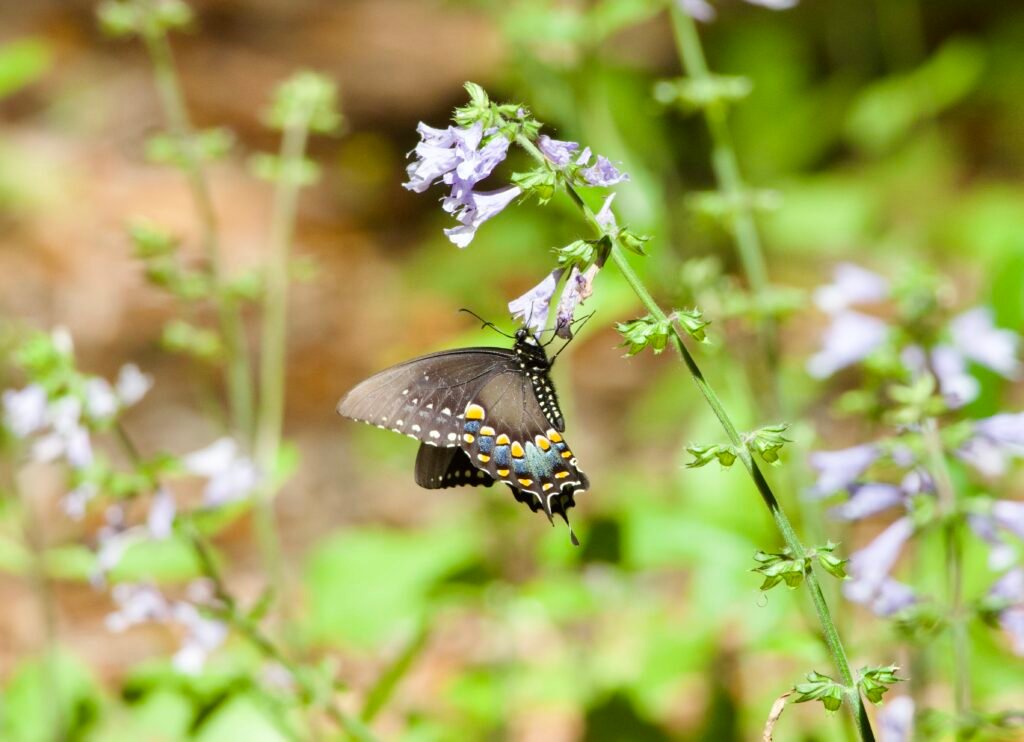
Scarlet Sage is a herbaceous perennial that will grow 2 to 3 feet tall and maybe a foot wide. It’s not a dense plant, so I find that it fills in areas between other plants quite nicely. Scarlet Sage has dark green, oval or heart-shaped hairy leaves. The foliage is aromatic when rubbed and pungent almost to the point of being stinky. This makes it very unpalatable to herbivores, so you won’t find bunnies or deer browsing your Scarlet Sage.
Spikes of red flowers emerge in early spring and continue until frost, providing nectar to pollinators for more than 6 months of the year in many areas of the South. The tubular flowers are about an inch long and arranged in a loose whorl along the stem of the bloom.
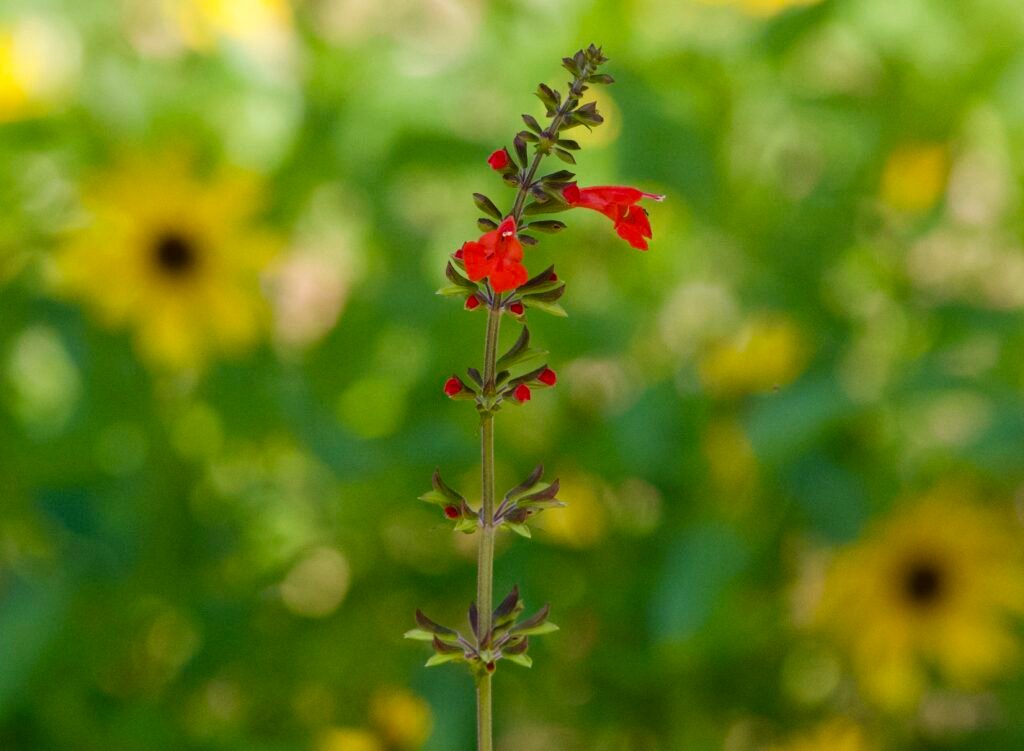

Seeds are small nutlets that form within the dried calyx, the green outer whorl of the flower. I have observed Painted Buntings (Passerina ciris)eating Scarlet Sage seeds in late summer, and I imagine other finches will also eat them.
As I mentioned above, this plant does readily reseed. If you’d prefer fewer volunteers sprouting, trim spent blooms prior to seed pods opening. Roots are shallow, so thinning plants as needed is not too much of a chore.
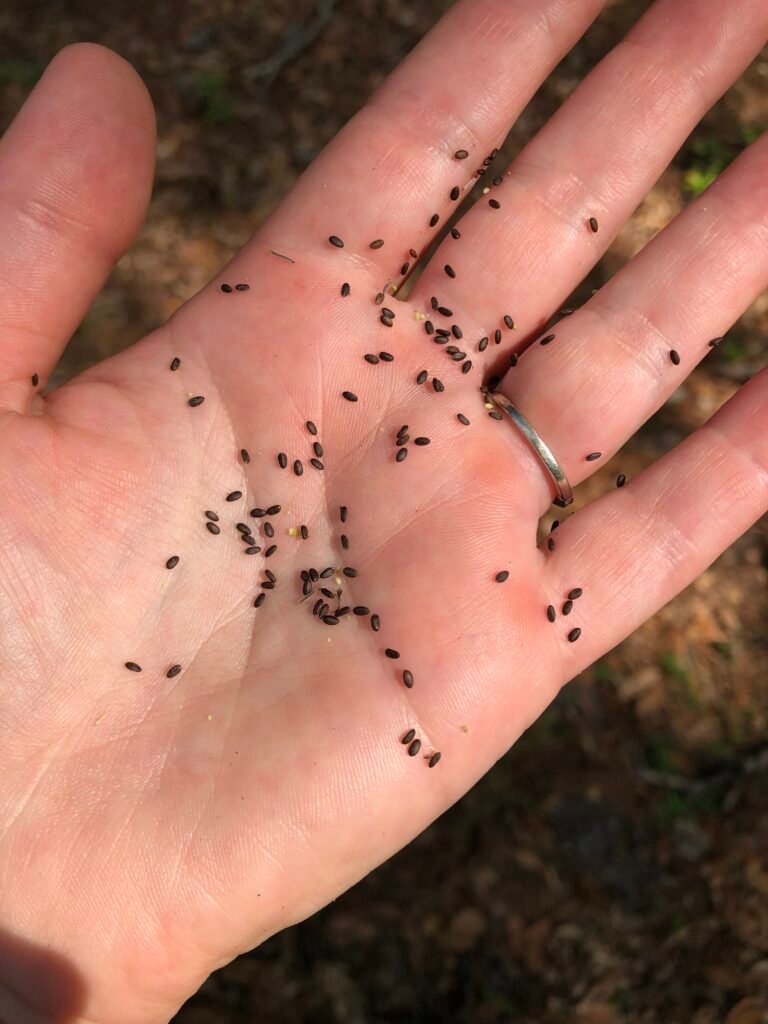
How to grow Scarlet Sage?
First, check your location. It’s best to grow Scarlet Sage within its native distribution which includes thickets and open woodlands in coastal areas from South Carolina through Florida and west to Texas. You will want to be in hardiness zones 7-11 (Hardiness Zone Map). If grown further north, Scarlet Sage will act as an annual, dying back in cold weather and emerging from dropped seeds in the spring.
This plant loves sandy, sunny locations in the South, but will also grow in shady, moist locations. Your Scarlet Sage will be drought tolerant once established, but will appreciate some moisture to encourage blooming when conditions are particularly dry and hot. Scarlet Sage will not do well in prolonged wet soils.
Key Attributes
| Botanical Name | Salvia coccinea |
| Hardiness Zone | 7-11 (although may be planted as an annual further north) |
| Native Distribution | Southeastern US |
| Soil Moisture | Medium to Dry |
| Light | Full sun to part shade |
| Height | 2-3 feet |
| Soil Type | Any with good drainage |
| Wildlife Benefits | Nectar source for bees, butterflies, and hummingbirds; birds may eat seeds |
Because this is a pollinator favorite and grows well just about anywhere, I like to deadhead flowers to encouraging blooming but drop the seed heads around the garden to create more plants. Trimming and dead-heading Scarlet Sage will keep it bushier and blooming longer. Seeds are the easiest way to propagate Scarlet Sage, but plants may also be propagated by division or cuttings.
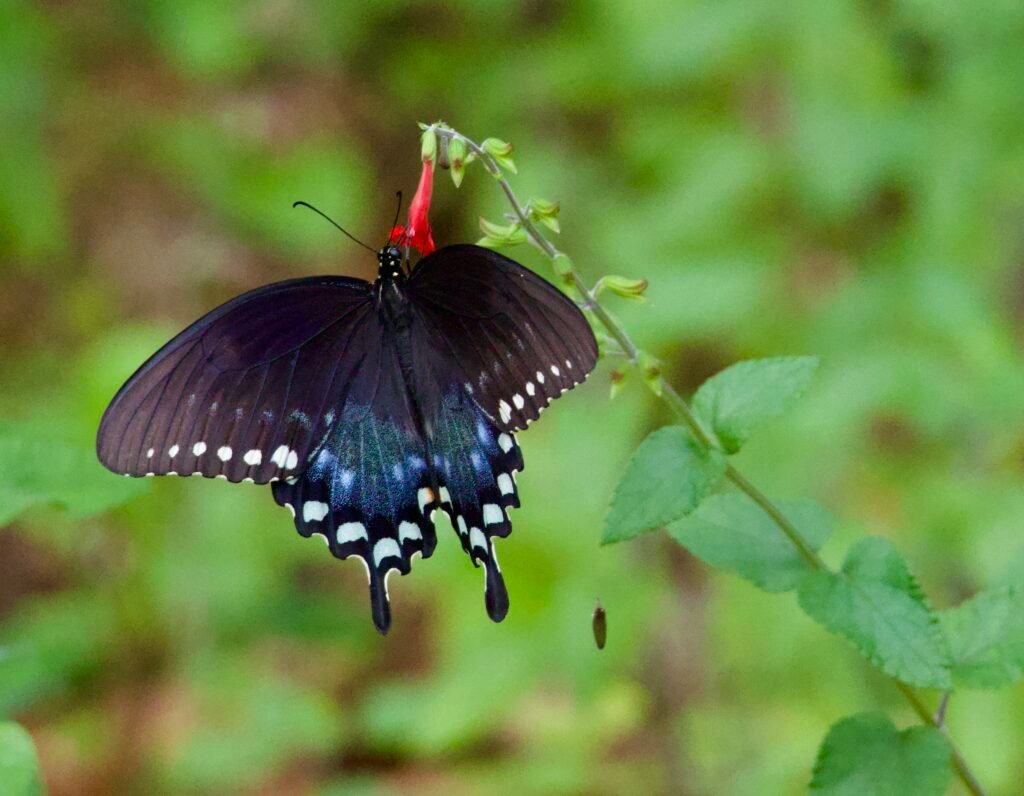
Many folks recommend mass planting Scarlet Sage to create a striking patch of red flowers. But I prefer to mix it in among heat tolerant grasses and shrubs. The vibrant red blooms look great peaking out between other natives like Muhly Grass (Muhlenbergia capillaris), Beach Rosemary (Conradina canescens), Dune Sunflower (Helianthus debilis), Black-eyed Susan (Rudbeckia hirta), and Georgia Savory (Clinopodium carolinianum).
I have not noticed my Scarlet Sage plagued by any pests or diseases. I have read some reports of Scarlet Sage getting powdery mildew. Powdery mildew is generally prevented by increased spacing and sun exposure.
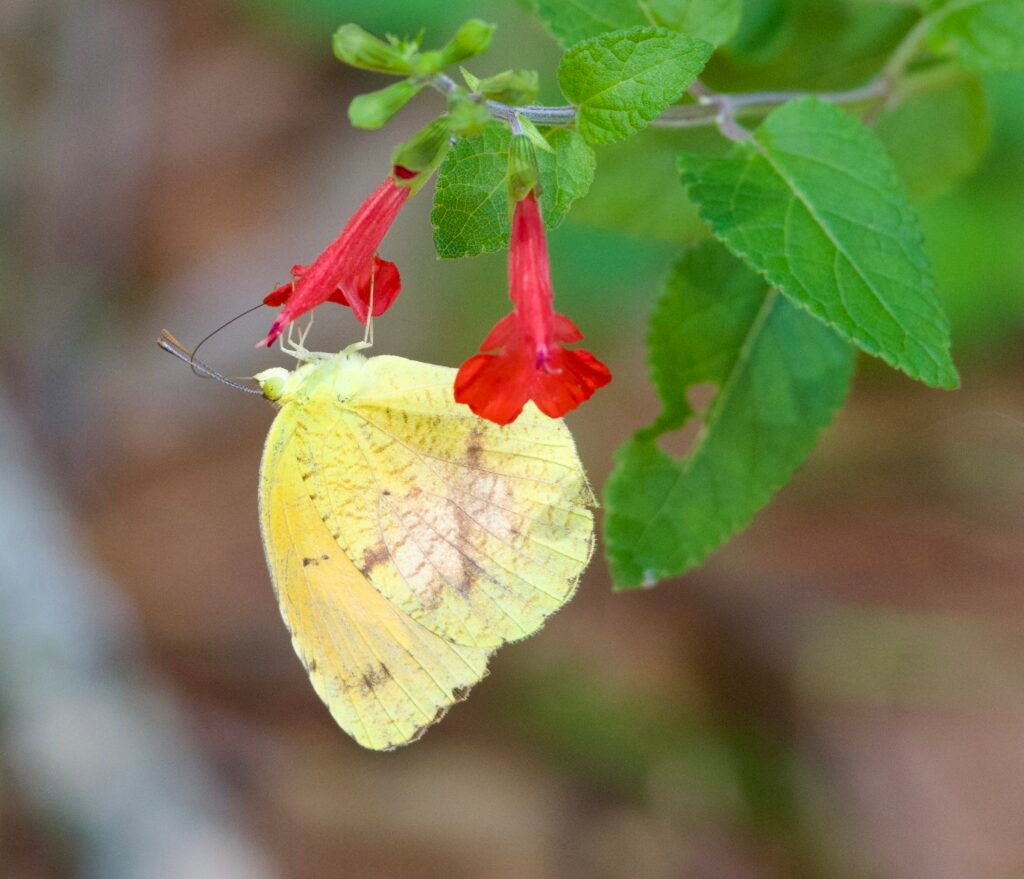
What else is cool about Scarlet Sage?
While I do see some bees on Scarlet Sage flowers, Ruby-throated Hummingbirds, Palamedes Swallowtails (Papilio palimedes), and Zebra Longwings are the pollinators I observe nectaring on the plants most often. In the South, Scarlet Sage will bloom very late into the fall and early winter, providing food for any Zebra Longwings still hanging out in your garden. Last winter, I had a Zebra Longwing feeding on Scarlet Sage in my yard well into January. Zebra Longwings love red and orange tubular flowers. They are happy to stay in areas with reliable sources of pollen and nectar. You can read more about how to attract Zebra Longwings to your garden here.
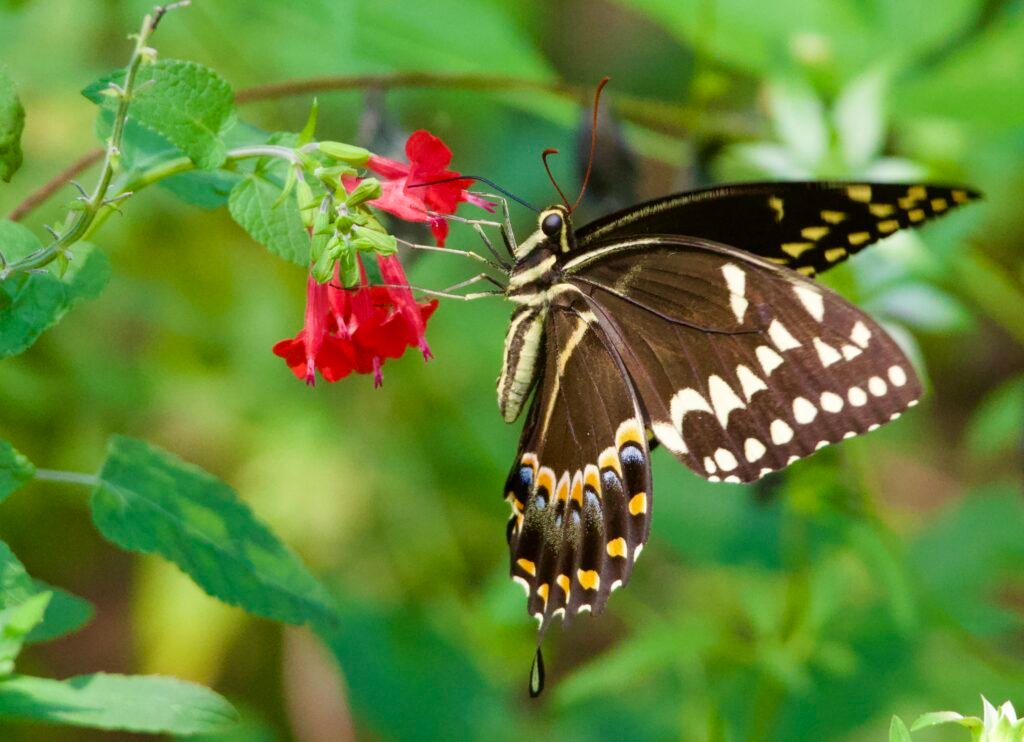
Where to get your own Scarlet Sage?
Scarlet Sage may be readily found to purchase online as plants or seeds. It’s also frequently found at nurseries specializing in native plants and even occasionally at your local garden center. Be sure to check the scientific name on the tag of any plant you purchase since Salvia splendens from Brazil is often sold as “scarlet sage.” I also frequently see cultivars of Salvia coccinea such as “Coral Nymph” with bicolored pink and white flowers for sale. The cultivars likely won’t reseed as readily as the straight species. You are most likely to stumble across cultivars of Scarlet Sage at your garden center. As always, I would recommend contacting a specialty native nursery first to check availability if looking for something specific.
Nurseries in the Southern Coastal Plain:
- Florabundance Gardens in Darien, GA
- Little Red Wagon Native Nursery, Tampa FL
- Florida Native Plants Nursery and Landscaping, Sarasota FL
- Rewild Nursery, Gainesville FL
Online resources:
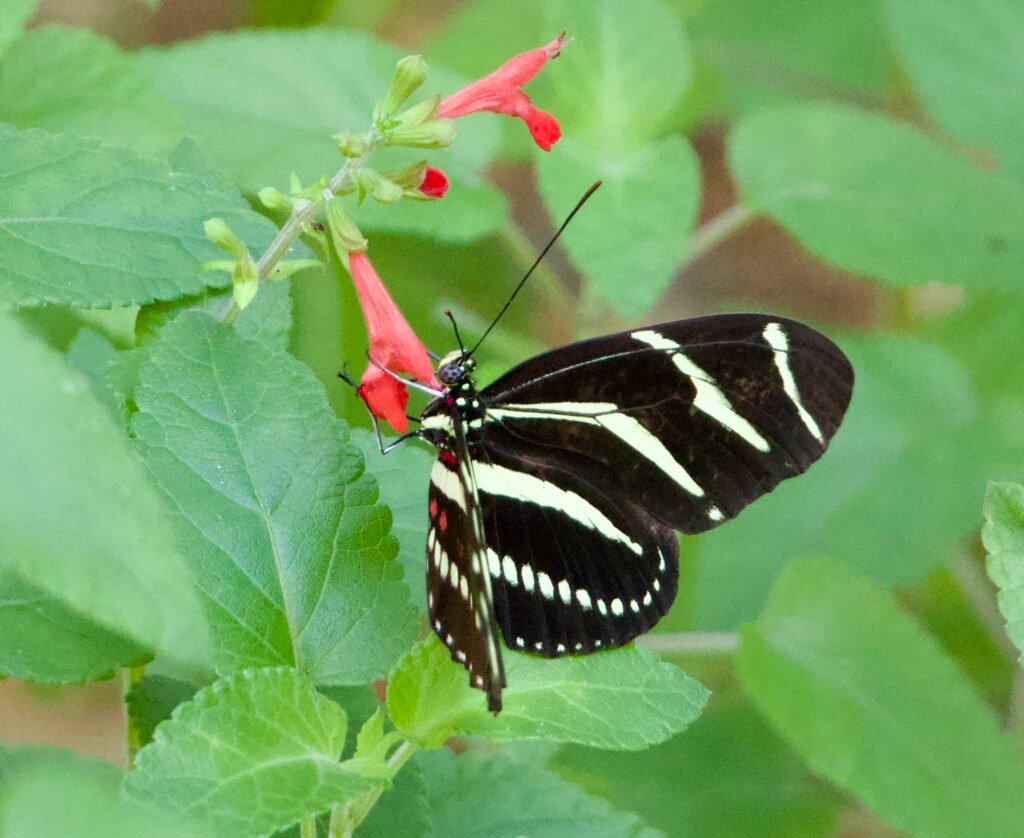
Where can I learn more about Scarlet Sage?
- Lady Bird Johnson Wildflower Center Plant Database: Salvia coccinea
- University of Wisconsin-Madison: Wisconsin Horticulture: Scarlet Sage, Salvia coccinea
- North Carolina Extension Gardener Plant Toolbox: Salvia coccinea
- UF IFAS Extension: SALVIA COCCINEA, SCARLET SALVIA, SCARLET SAGE
- Florida Wildflower Foundation: Tropical Sage
- Wilcox Nursery& Landscape Go Native Blog: Tropical Sage
- UF/IFAS Blogs: Tropical sage is a cheerful little native flower
- Florida Native Plant Society Native Plant Owners Manual: Salvia coccinea – Tropical Sage by M. Hutchinson
- Pharmacol 2022: A Review on the Ethnopharmacology and Phytochemistry of the Neotropical Sages (SalviaSubgenus Calosphace; Lamiaceae) Emphasizing Mexican Species by Ortiz-Mendoza and Others.
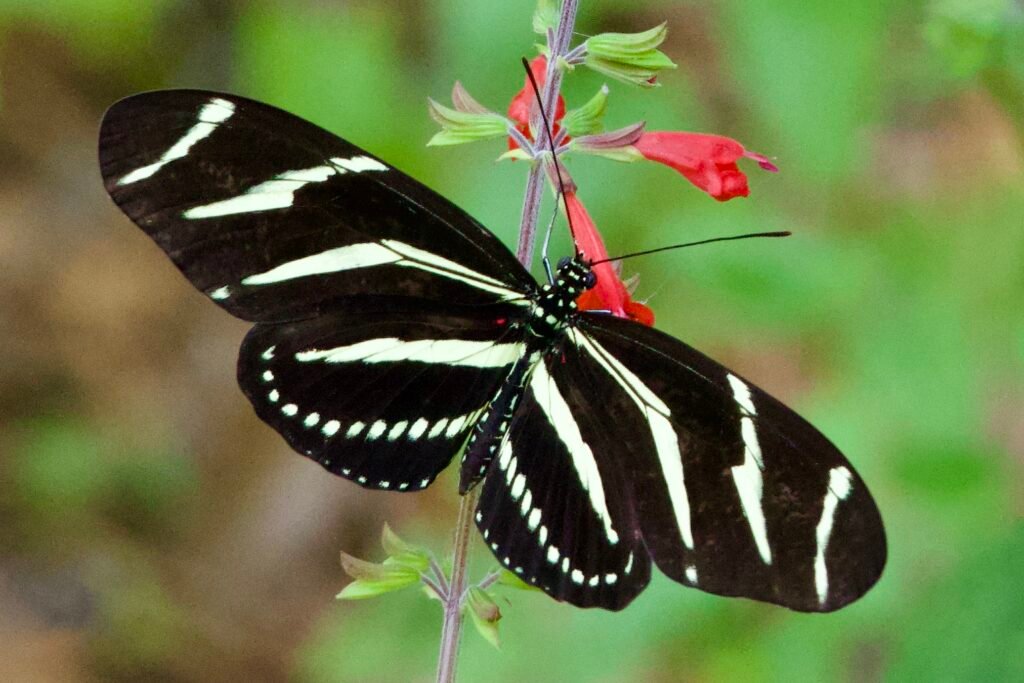
Pingback: The Southern Wild - How to Attract Zebra Longwings to Your Garden
Pingback: The Southern Wild - Spotting Silver: How to Attract Gulf Fritillary Butterflies